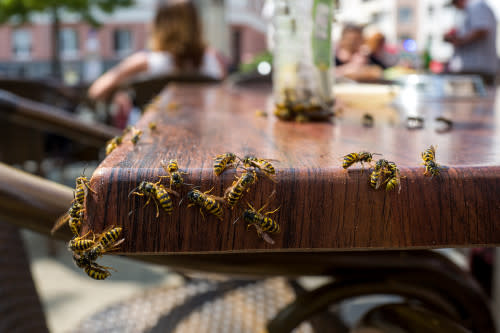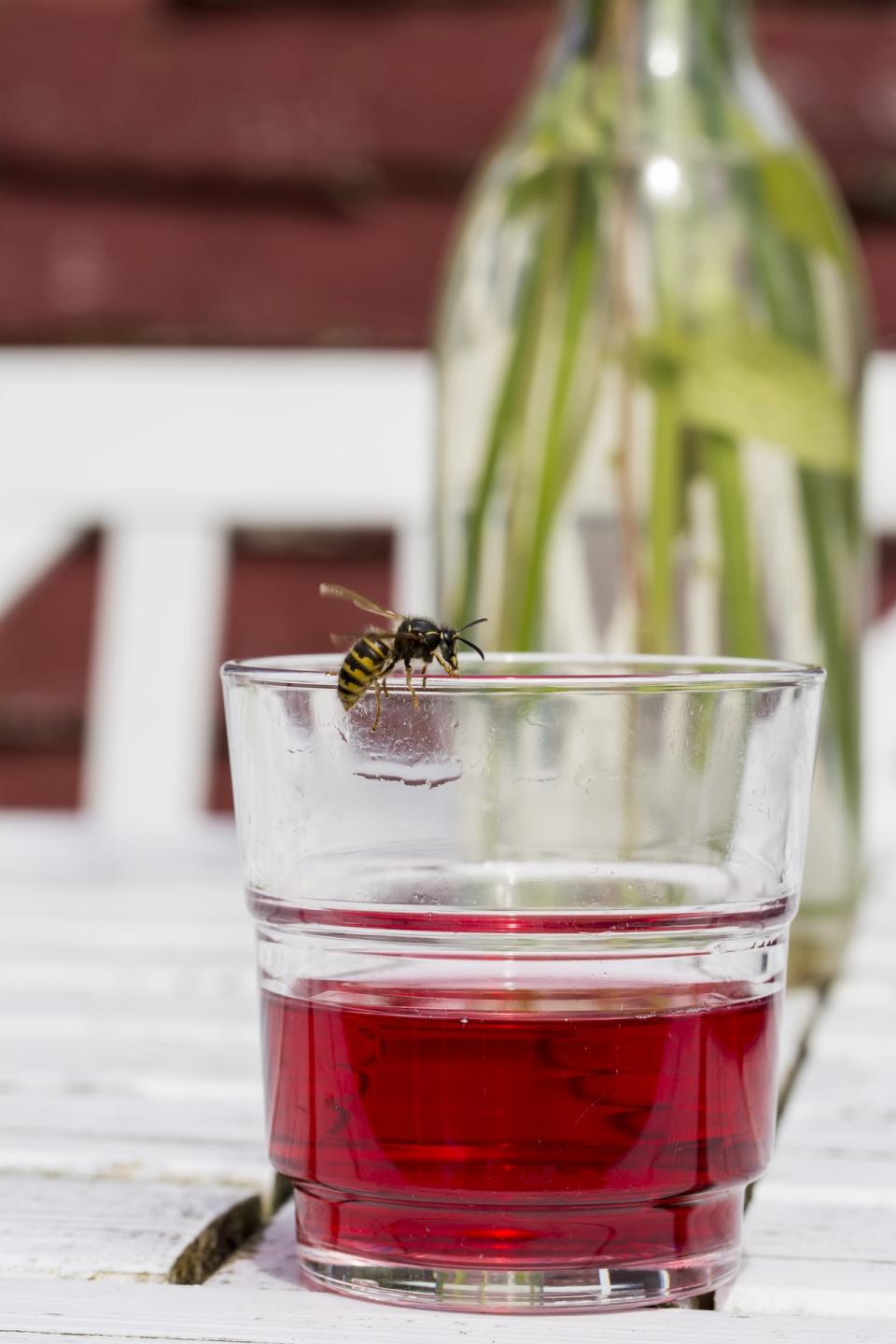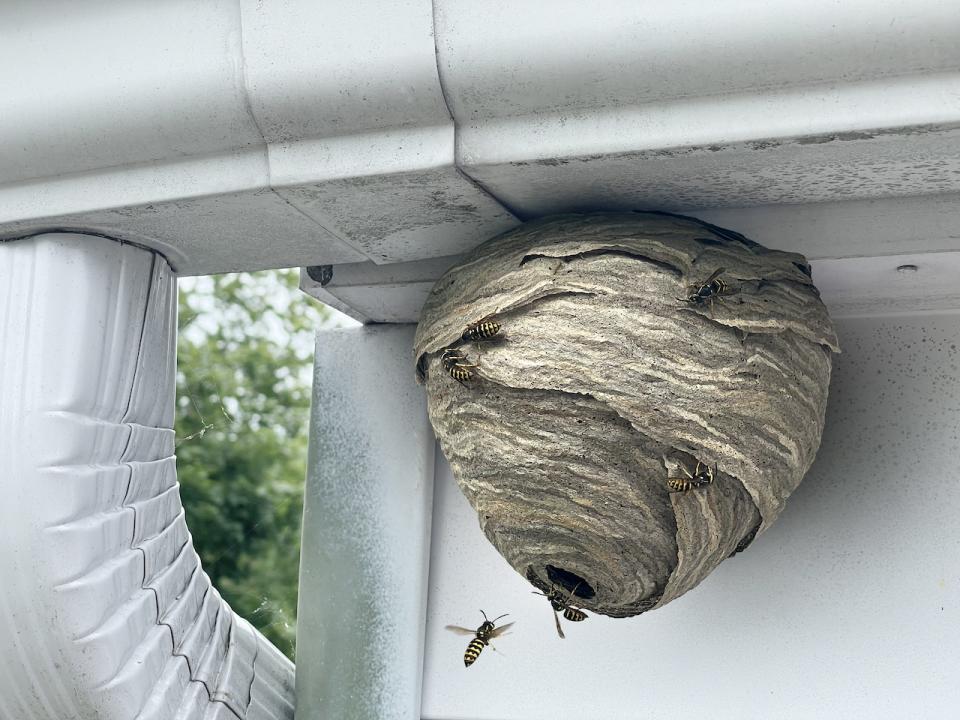Colder weather has arrived...so when do the pesky wasps leave?
With summer gone, you might be wondering if it's now safe to enjoy your backyard or daily walk in peace without the disturbance of unwanted wasps.
Rest assured, it is...or will be soon enough.
Visit our Complete Guide to Fall 2023 for an in-depth look at the Fall Forecast, tips to plan for it and much more!
With the autumn well-established, it's just a matter of when temperatures plummet to a certain range, if they haven't already done so in your part of Canada.
In a recent interview with The Weather Network, Judith Myers, professor emerita in the faculty of land and food systems at the University of British Columbia (UBC), said wasps become inactive once temperatures fall to within the 7-10°C range.
"Of course, it's got to get down to freezing temperatures before they're going to die," said Myers.

(Getty Images)
What happens to launch the hibernation process
Before wasps will disappear from sight, the queens will stop laying eggs to produce more workers in the late summer, and then after that, they're just creating new queens for next year and drones to mate with them, Myers said.
The population of worker wasps will then begin to deteriorate, with fewer flowers and caterpillars around as autumn progresses.
"These workers are getting old, they're getting grumpy [and] they're having difficulty finding food. That's why they just are so attracted to things like picnics, and they will just die out over time," said Myers. "In the meantime, those queens have mated [and] they're looking for places to spend the winter in."

(Getty Images - 1178780404)
They will then hibernate over the winter and emerge in the spring to set up new colonies once more. "It's a bit of a prolonged process," she said, noting there are still yellow jackets in plain sight in B.C. while she conducted the interview (Oct. 3).
While Ontario was experiencing much abnormal fall warmth at the time of the interview, wasps metabolize "more rapidly" and they can run out of energy quicker at high temperatures, Myers added.
"It could be that 30-degree temperatures aren't really that good for them," said Myers.
Come springtime, if you have a wet and cool season, it takes the wasps a while to collect enough nectar from the flowers, she noted. Temperatures in the spring are "very important" to the development of wasp populations.
"They're the ones then that have to produce the eggs, and provide those larvae with enough nutrients to be given to make some workers that will then begin to make the colonies successful and survive," said Myers.
People will know they're disappearing by how bothered by wasps they are
People are going to simply realize they've begun to hibernate or die off by how much they usually get bothered by the insect, Myers said.
Although there might be fewer of them, wasps that are hanging around in the late summer and early fall tend to be "really looking for food."

(Getty Images-1271137701)
"They will do things like land on your arm and take a little bite," said Myers. "You hope that you haven't somehow swatted them and got stung [as a result]. They are more annoying in the fall, but they become less numerous."
As well, if you had a series of cold, rainy days, their numbers are gonna go down even further.
SEE ALSO: Simple hacks to keep the wasps at bay in your backyard
Worker wasps will die before winter and queens will hibernate
The good news for those irked by wasps is that most of them that are encountered by humans are the worker wasps, which are going to die during the fall -- "so, there's nothing they can do that's going to get them through the winter," Meyers reiterated.
"It's the queens that will make it through the winter. As I said, they look for a place to hibernate. Sometimes they will come into houses and attics or cracks in the bark of trees where they might be protected," said Myers. "Then they adapt to the temperature. They're pretty cold-resistant."
Since the queens will be looking for places to hibernate through the winter, that includes people's homes. However, keeping them out might be "pretty difficult," Myers said.

(Getty Images -1329608763)
"They're very good at finding small openings to get into. I think you could spend a lot of time looking for them and not be successful," said Myers.
The best approach for locating and removing wasps is in the spring, if you notice them coming and going from the eaves of your home, she said. If you can track down the location of the nest, it is possible to treat it with an insecticide or have a professional remove them.
She offers a word of caution about "gratuitously" getting rid of yellow jackets because they eat a tremendous amount of caterpillars and other insects nearby, so they do have ecological value.
"But, you don't want one that's right above your play area for your kids or your deck where you're having picnics. If you can spot them coming and going, you might want to take some action to control that nest early on," said Myers.
While we may find their poorly timed appearances outdoors annoying, especially near the end of summer and early fall, wasps are an essential part of our ecosystem. Besides keeping the population of caterpillars, ticks, aphids, flies and mosquitoes in check, wasps help speed up the decomposition process of old trees and pollinate plants just like bees do.
WATCH: How to properly remove beehives and wasp nests
Thumbnail courtesy of Pixabay/Ralphs_Fotos.
Follow Nathan Howes on the X platform, formerly known as Twitter.
